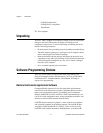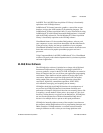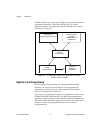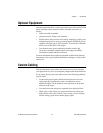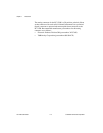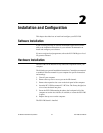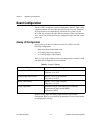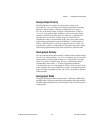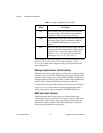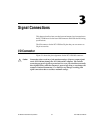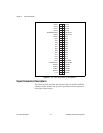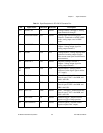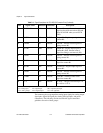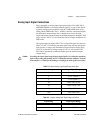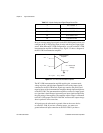
Chapter 2 Installation and Configuration
PCI-1200 User Manual 2-4 © National Instruments Corporation
While reading the following paragraphs, you may find it helpful to refer to
the Analog Input Signal Connections section of Chapter 3, Signal
Connections, which contains diagrams showing the signal paths for the
three configurations.
RSE Input (Eight Channels, Reset Condition)
RSE input means that all input signals are referenced to a common ground
point that is also tied to the PCI-1200 analog input ground. The differential
amplifier negative input is tied to analog ground. The RSE configuration is
useful for measuring floating signal sources. With this input configuration,
the PCI-1200 can monitor eight different analog input channels.
Considerations for using the RSE configuration are discussed in Chapter 3,
Signal Connections. Notice that in this mode, the signal return path is
analog ground at the connector through the AISENSE/AIGND pin.
NRSE Input (Eight Channels)
NRSE input means that all input signals are referenced to the same
common-mode voltage, which floats with respect to the PCI-1200 analog
ground. This common-mode voltage is subsequently subtracted by the
input instrumentation amplifier. The NRSE configuration is useful for
measuring ground-referenced signal sources.
Table 2-2.
Analog Input Modes for the PCI-1200
Analog Input
Modes
Description
RSE RSE mode provides eight single-ended inputs with
the negative input of the instrumentation amplifier
referenced to analog ground (reset condition).
NRSE NRSE mode provides eight single-ended inputs with
the negative input of the instrumentation amplifier
tied to AISENSE/AIGND and not connected to
ground.
DIFF DIFF mode provides four differential inputs with the
positive input of the instrumentation amplifier tied to
channels 0, 2, 4, or 6 and the negative input tied to
channels 1, 3, 5, or 7, respectively, thus choosing
channel pairs (0, 1), (2, 3), (4, 5), or (6, 7).



